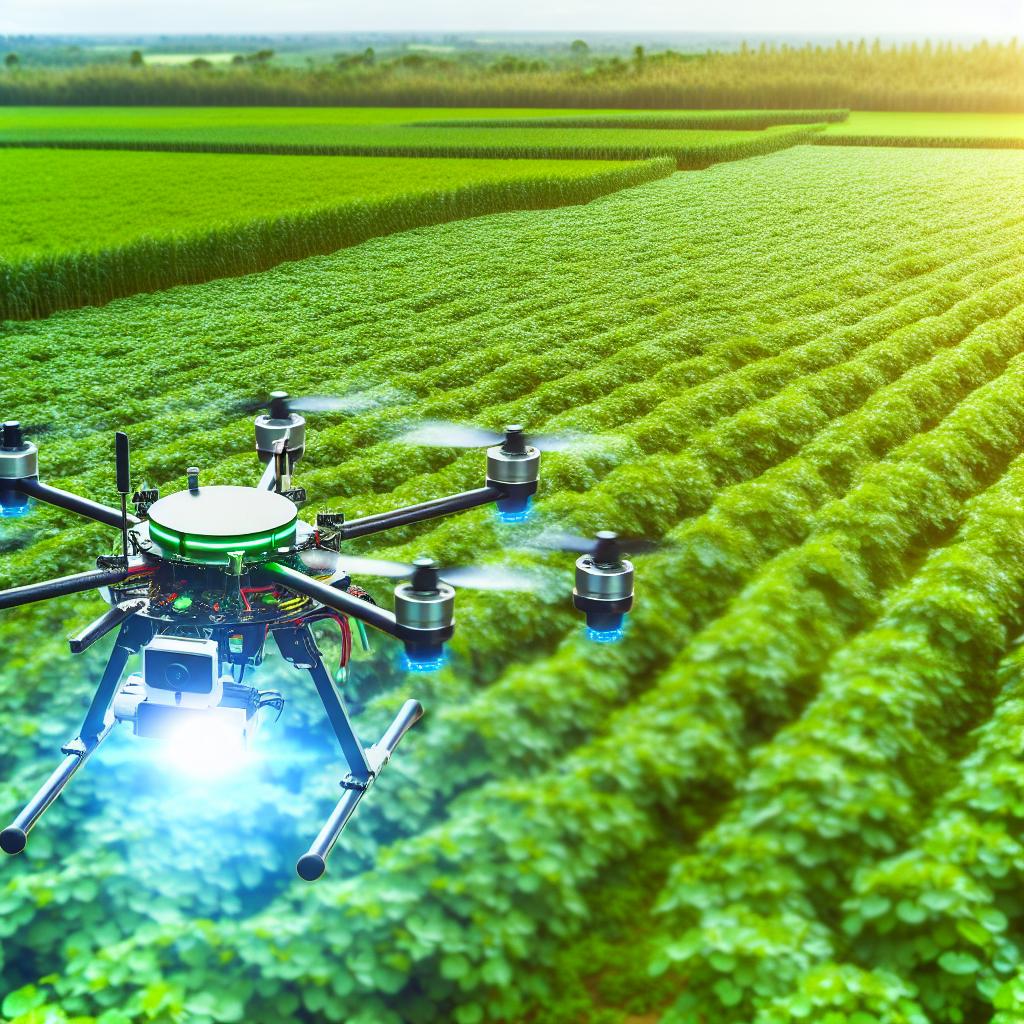
Explore how the synergy between drones and the Internet of Things (IoT) is revolutionizing agriculture, enhancing crop yield, and paving the way for a sustainable future in farming.
The Evolution of Smart Farming Technologies
Smart farming has come a long way from its humble beginnings with the domestication of crops and animals. Advancements in technology have continuously shaped agricultural practices, with recent years witnessing a remarkable transformation. The digital age has introduced precision agriculture, where farmers utilize advanced tools and data analytics to optimize their operations.
The advent of IoT devices and drones has further pushed the boundaries, enabling real-time monitoring and management of crops. These smart technologies offer unprecedented levels of detail and control, allowing farmers to make informed decisions that enhance productivity and sustainability.
Leveraging Drones for Precision Agriculture
Drones are becoming indispensable tools for precision agriculture, offering a bird's-eye view of farmlands. Equipped with sensors and cameras, these unmanned aerial vehicles can monitor crop health, track livestock, and assess environmental conditions. They facilitate targeted interventions, such as precise pesticide application, which reduces waste and environmental impact.
The data collected by drones also help in detecting plant diseases and pests early on, allowing for timely and effective treatment. This level of precision not only improves crop yields but also ensures that the quality of the produce remains high.
Connecting the Dots: How IoT Enhances Drone Capabilities
IoT serves as the connective tissue that amplifies the capabilities of drones in agriculture. By integrating sensors, drones, and data analytics platforms, IoT creates a cohesive network that provides real-time insights into farm operations. This interconnected system enables automated responses to changing conditions, optimizing resource use and crop management.
For example, soil moisture sensors can trigger an irrigation system managed by drones. Similarly, IoT can facilitate the seamless collection and transfer of data to cloud-based platforms, where advanced algorithms analyze the information to provide actionable insights to farmers.
Analyzing Farm Data for Informed Decision Making
The crux of smart farming lies in data analysis. By scrutinizing the vast amounts of data harvested from drones and IoT devices, farmers can unearth patterns and correlations that were previously invisible. These insights drive informed decision-making, from crop rotation strategies to harvest timing.
Data analytics also empowers farmers to predict outcomes based on historical data, weather patterns, and current field conditions. As a result, they can proactively manage risks and enhance their operational efficiency, ensuring a more stable and robust agricultural ecosystem.
Future Trends: What's Next for Drones and IoT in Agriculture
The future of drones and IoT in agriculture is poised for exponential growth, with emerging technologies further expanding their potential. Developments in artificial intelligence and machine learning are expected to refine data analysis, leading to more nuanced insights and predictions.
Advancements in battery technology and automation will likely increase the endurance and autonomy of drones, making them more efficient and cost-effective. As these technologies continue to converge and mature, smart farming will become even more sophisticated, opening up new horizons for sustainable agriculture that prioritizes both productivity and environmental stewardship.
